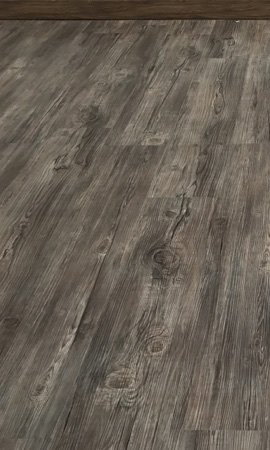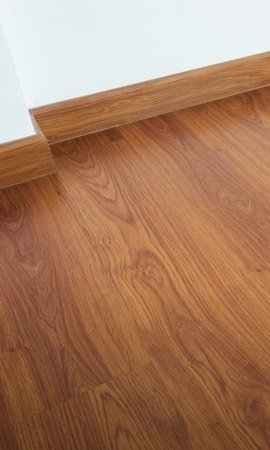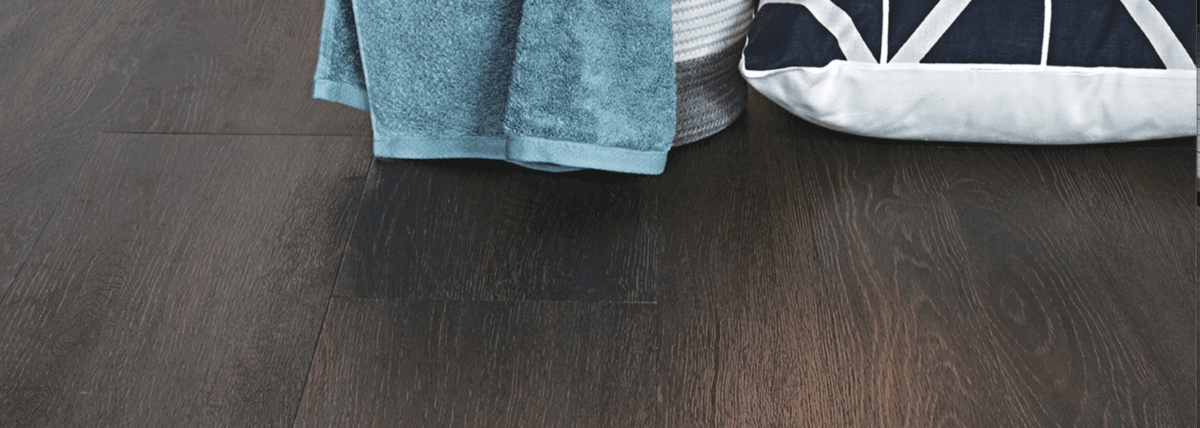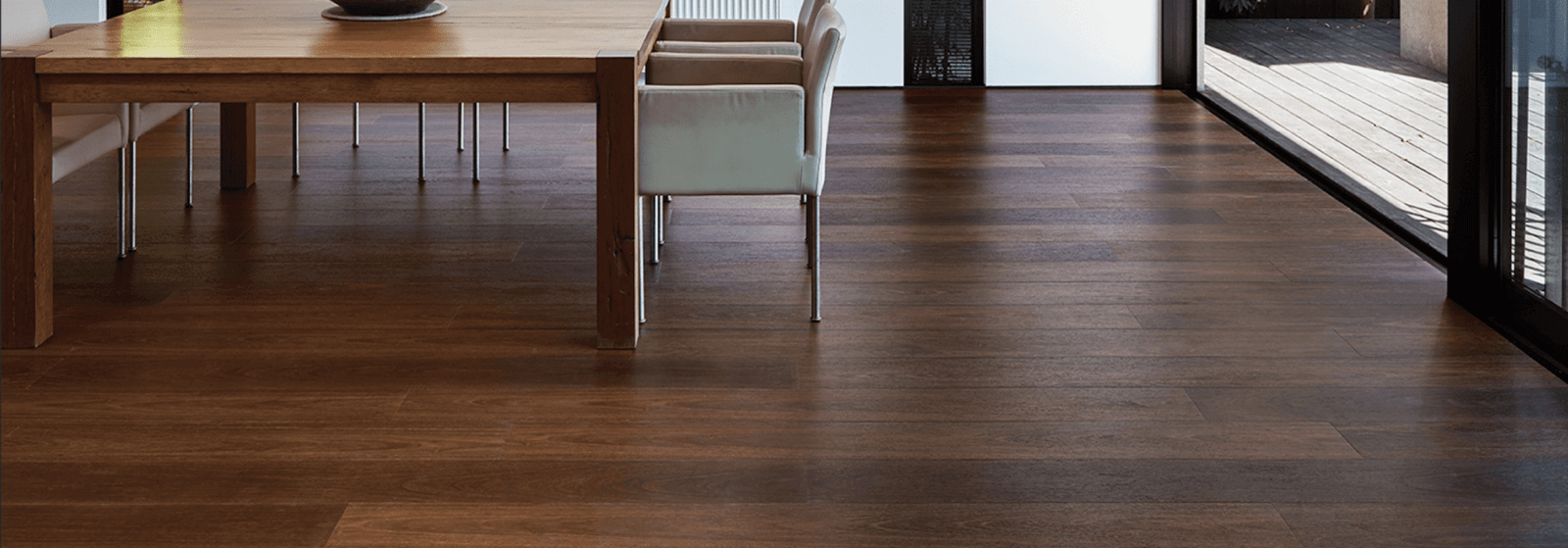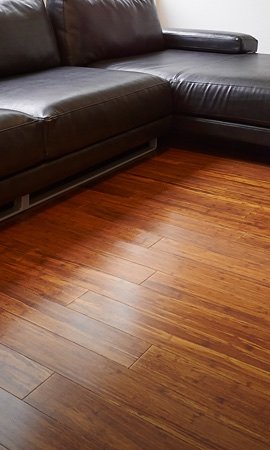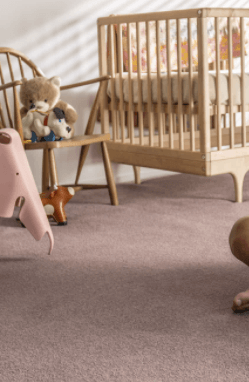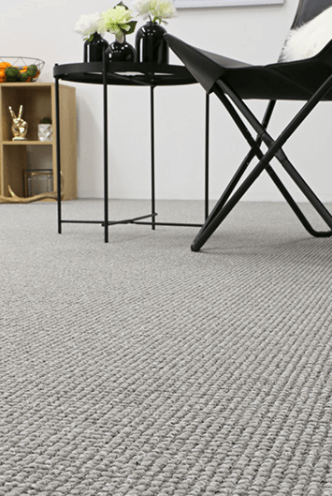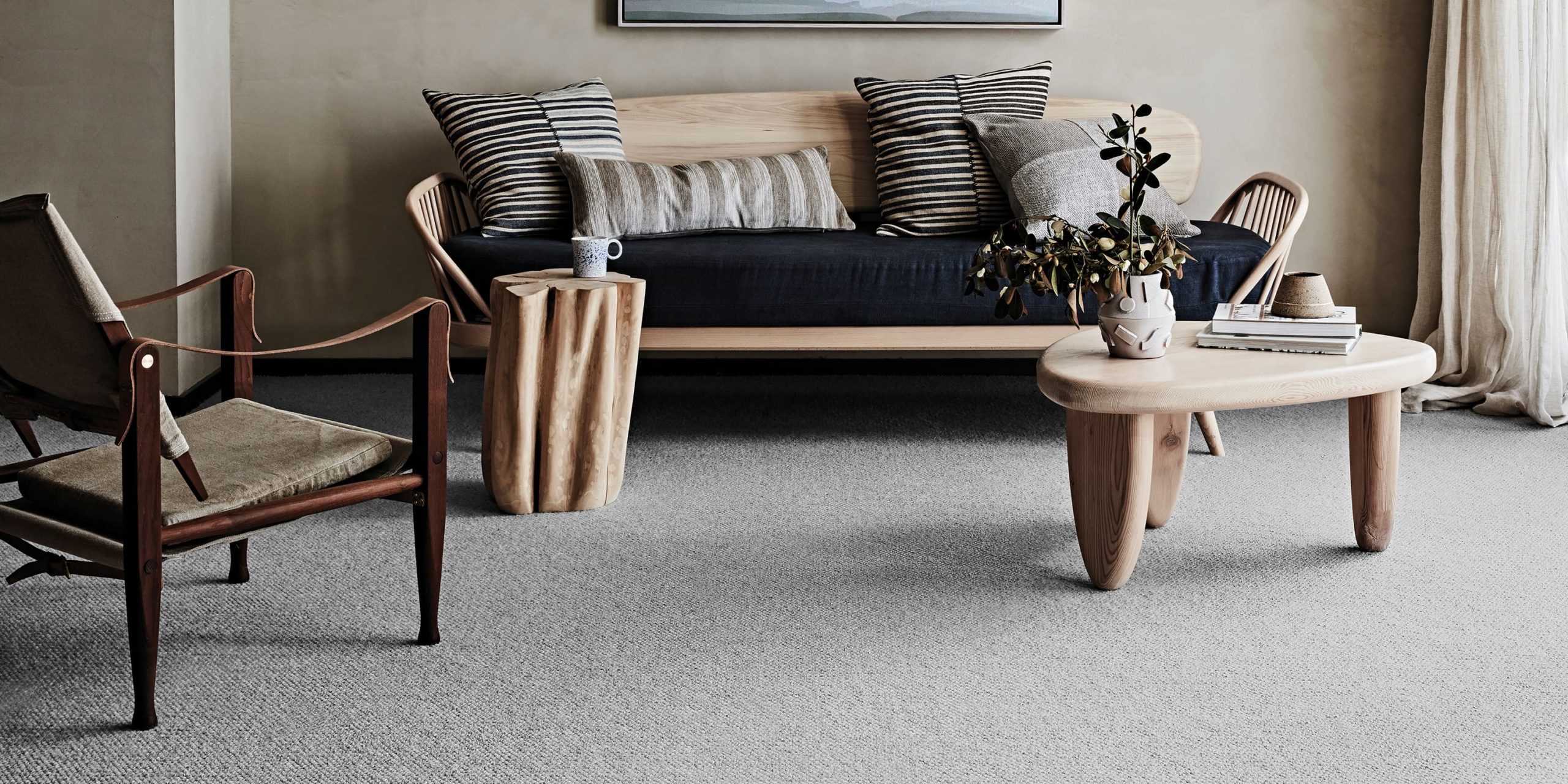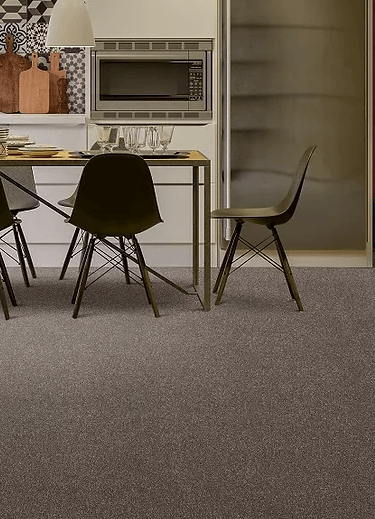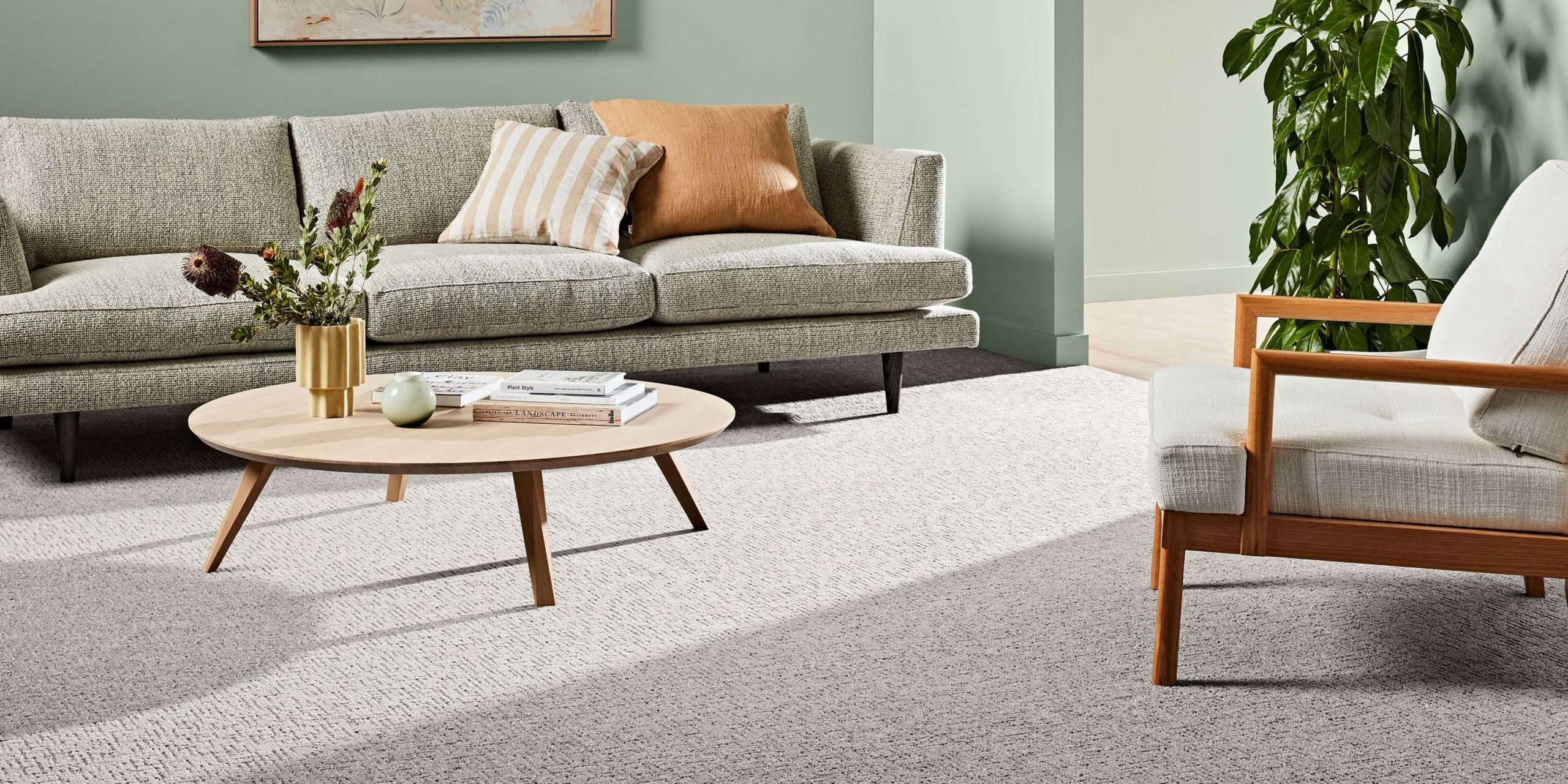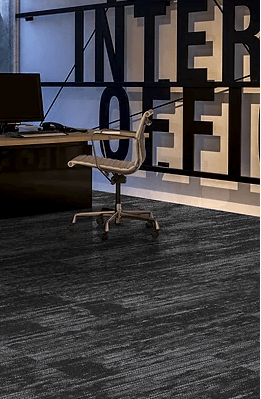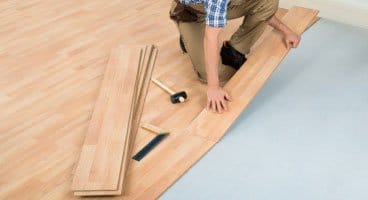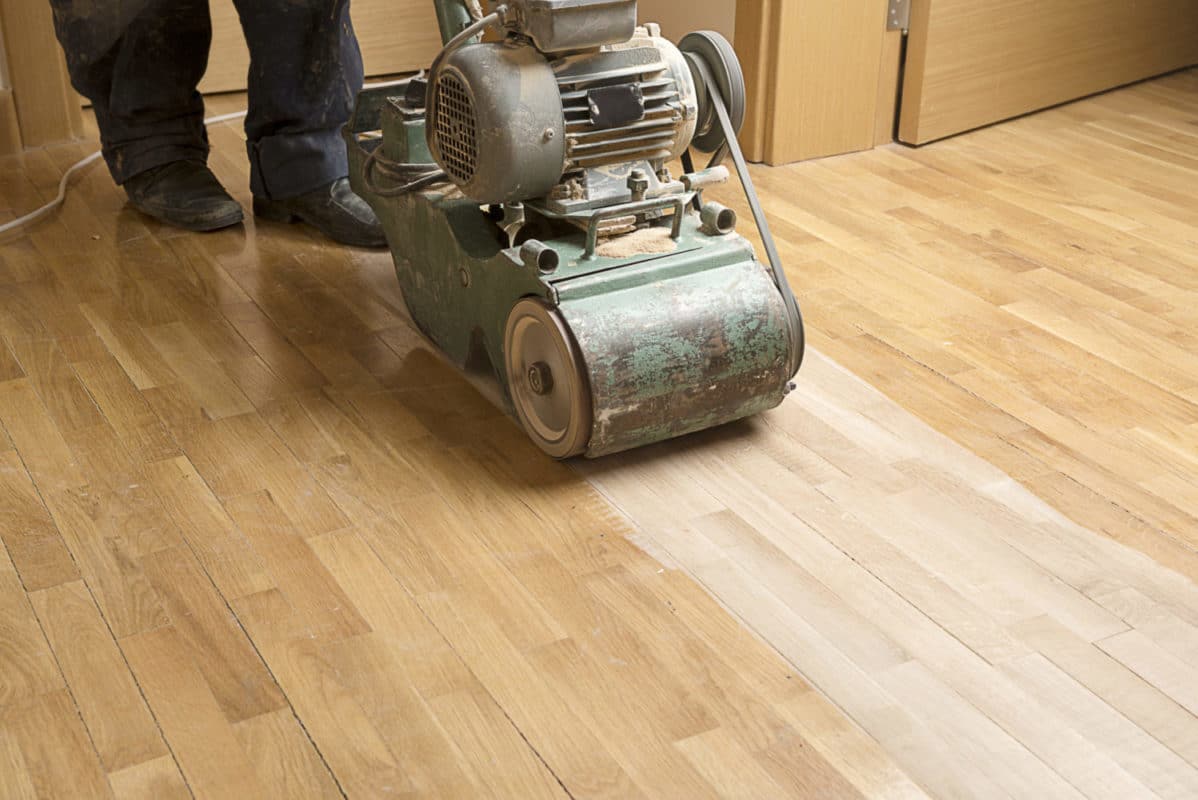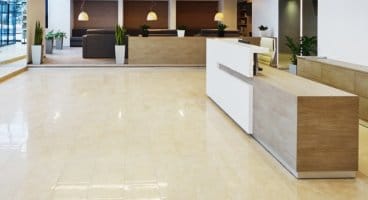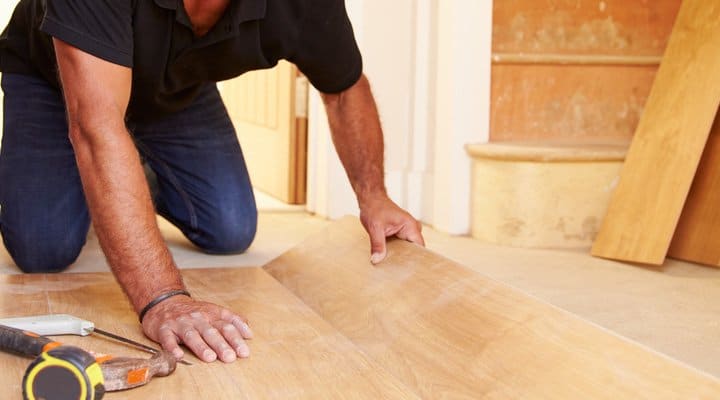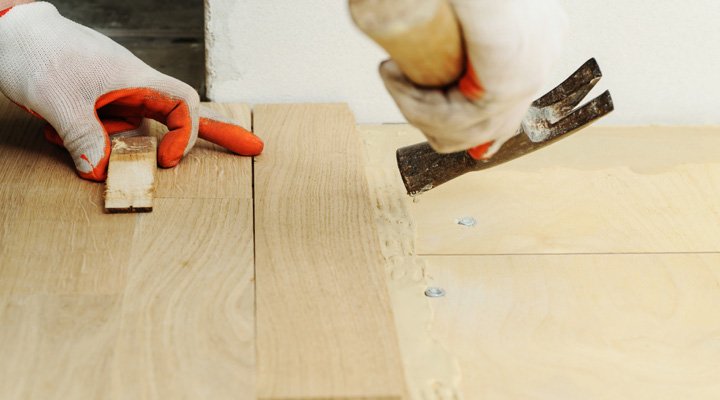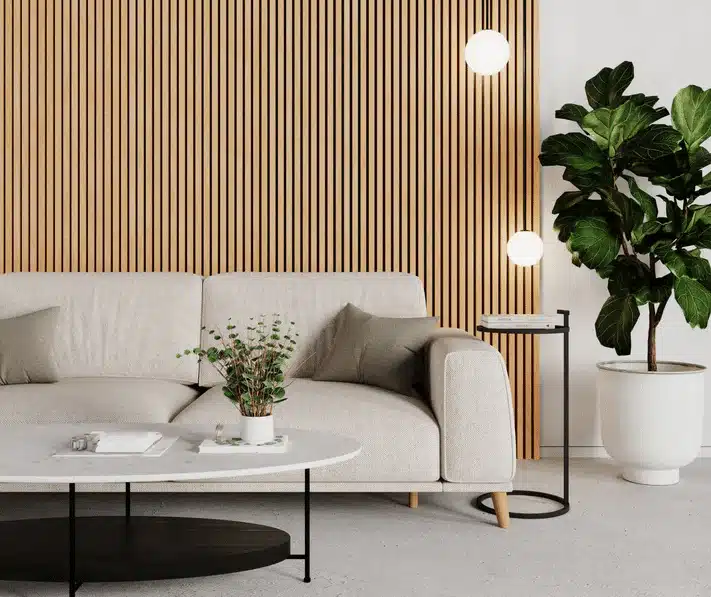

24 Oct Ultimate Guide To Acoustic Wall Panels
Noise has a powerful impact on how we experience spaces. Whether you’re trying to have a good night’s rest in the bedroom, enjoying your favourite TV show in the living room or home theatre, or attempting to concentrate in a busy office, unwanted echoes and poor sound quality can quickly become frustrating.
This is where acoustic wall panels come in. Made to absorb sound waves and reduce echoes, these specially designed wall panels are built to enhance the overall acoustic comfort of a room.In this ultimate guide, we’ll explain what acoustic panels are, how they work, the different types available, their benefits, installation tips, and design ideas. By the end, you’ll know exactly how to choose the right solution for your space.
What are Acoustic Wall Panels?
Acoustic wall panels are decorative and functional panels fixed to walls with the specific purpose of controlling sound. Acoustic wall panels are typically made from sound-absorbing materials, including foam, fabric, wood, or composite blends.
They are used in a wide range of settings, both residential and commercial. Examples include: living rooms, home theatres, bedrooms, offices, restaurants, and classrooms.
Trying to figure out how Acoustic Wall Panels can fit into your space? Contact FloorVenue today – our experts provide free professional advice and home inspections to recommend the best solutions!
How do Acoustic Wall Panels Work?
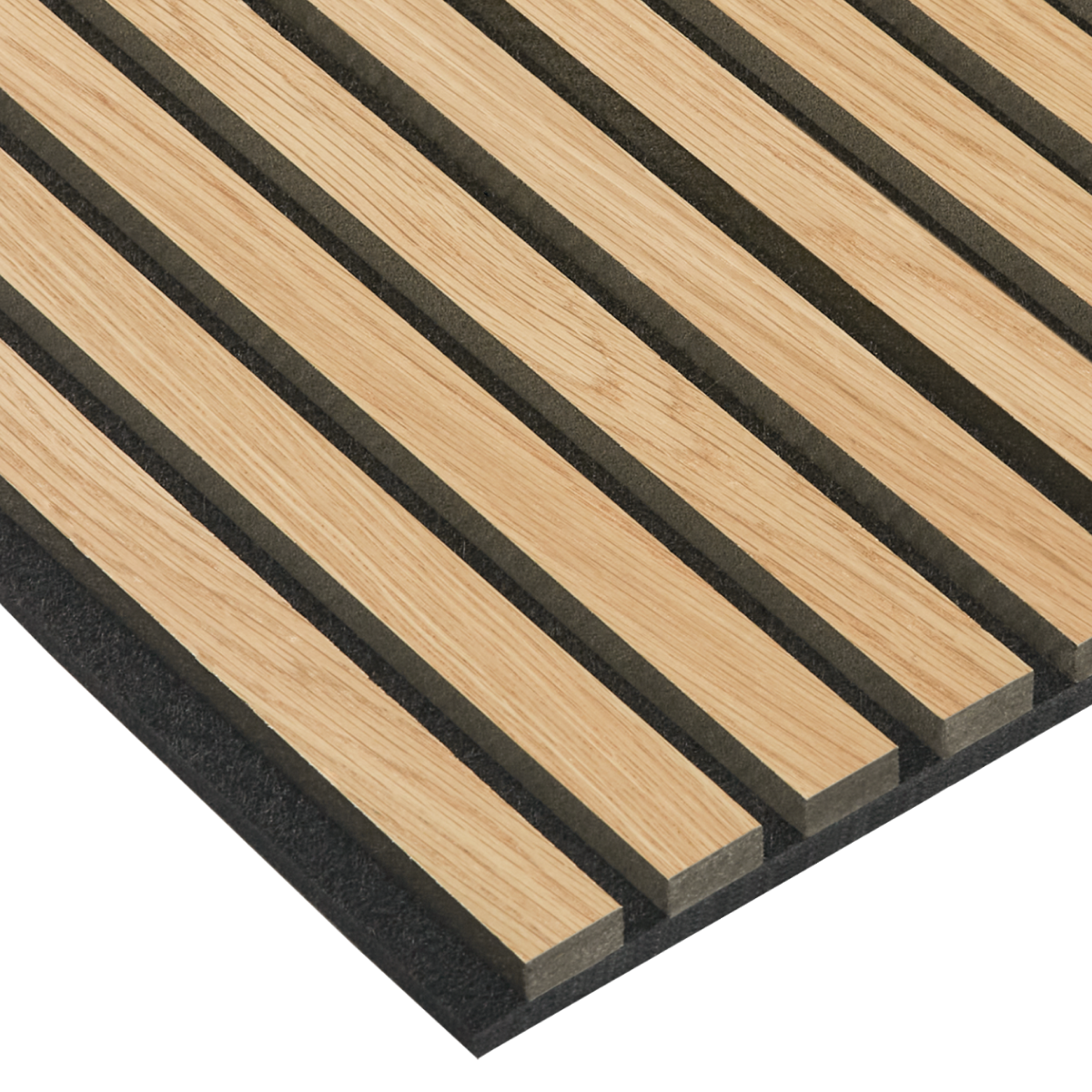

To understand how wall panels enhance the acoustics of spaces, it helps to know how sound behaves. When sound waves hit a hard surface such as brick, drywall, glass or tile, they bounce back into the room. These reflections, combined with the original sound, can lead to echoes, muddiness, and poor clarity.
Acoustic wall panels absorb these reflections. They are constructed with fibrous, porous or perforated materials that trap sound energy and convert it into heat at a microscopic level. This reduces reverberation and makes speech and music clearer. This is why acoustic wall panels are so common in living rooms and home theatres, as they dramatically improve the sound quality when you watch your favourite movies and TV shows.
Benefits of Acoustic Wall Panels
Enhanced Acoustics
Acoustic panels minimise echoes within a space, making conversations more intelligible and audio more enjoyable. By reducing unwanted sound reflections, these panels create a more pleasant and immersive listening experience.
Improved Speech Clarity
Whether it’s in the living room, office, conference room, or classroom, acoustic wall panels significantly improve the clarity of conversation. This leads to fewer misunderstandings, reduced fatigue from straining to hear, and less frustration from repeatedly asking others to repeat themselves. In home settings, it means fewer rewind inputs on the television remote!
Better Productivity and Comfort
Studies have consistently shown that noisy environments increase stress levels, reduce productivity, and negatively impact overall well-being. Acoustic treatment can transform a space into a calmer, more focused environment, ultimately increasing productivity and enhancing comfort. By creating a more peaceful atmosphere, individuals can concentrate better, work more efficiently, and feel more relaxed.
Enriched Entertainment
Just like a movie theatre, acoustic wall panels can elevate your home entertainment experience. By installing panels in home theatres, living rooms, or music rooms, you can replicate the immersive audio experience of a commercial cinema. Sound becomes crisp, clear, and engaging, drawing you into the action on screen or the nuances of your favourite music.
Aesthetic Appeal
Beyond their functional benefits, acoustic wall panels offer a wide range of design options. Available in various fabrics, colours, and wooden designs, these panels can add style, texture, and contrast to your spaces. Whether you’re aiming for a modern, sleek look or a more traditional aesthetic, there’s an acoustic panel to suit your taste and decor.
Eco-Friendly Option
Many modern acoustic panels are crafted from eco-friendly materials, including recycled options. This means you can enjoy the benefits of improved acoustics and stylish design while also supporting sustainable practices. By choosing acoustic panels made from environmentally responsible materials, you’re contributing to a greener future without compromising on performance or aesthetics.
Types of Acoustic Wall Panels
Timber Slat
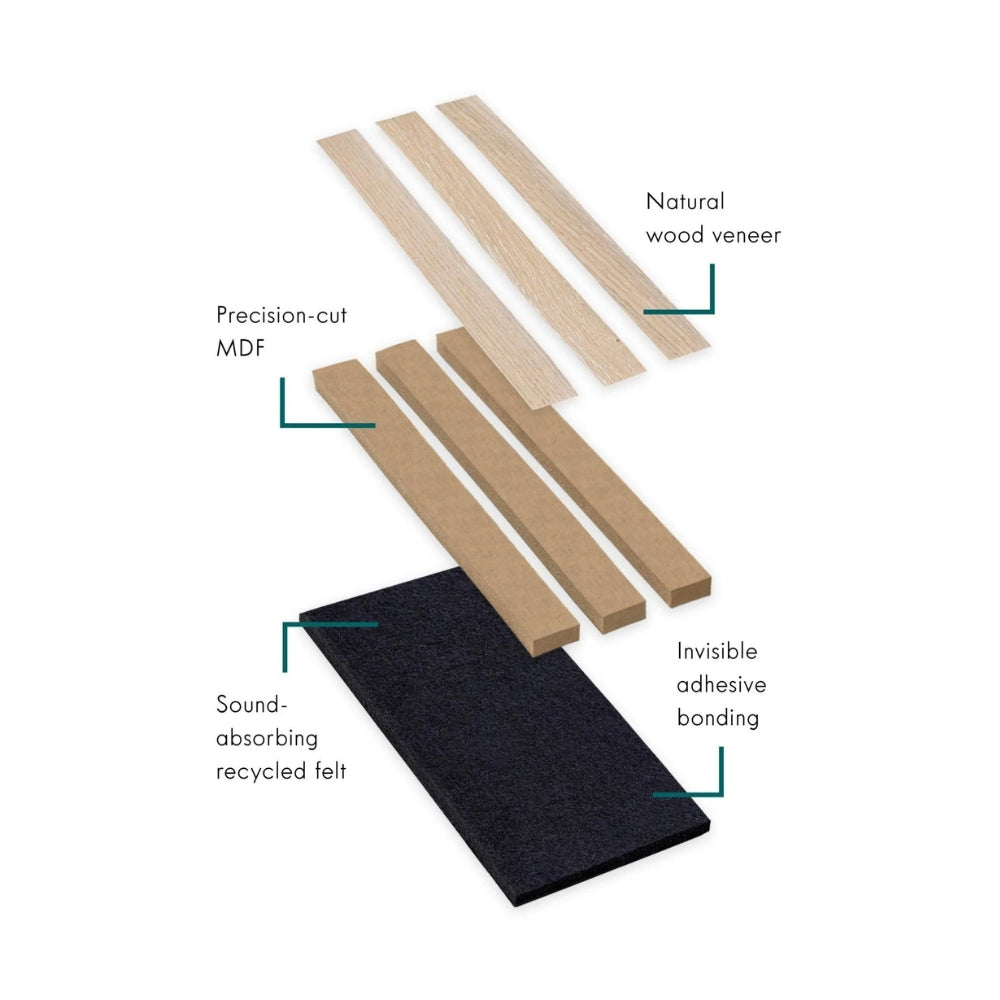

Timber Slat is the cream of the crop in the acoustic wall panel world. Bringing in the natural and traditional traits of real timber in its veneer, durability and structure in its Medium Density Fibreboard (MDF) and high-quality final felt layer, timber slat acoustic wall panels provide a premium experience and soundscape for anyone looking to install wall panels in their homes or offices.
Structure
Timber slat acoustic wall panels typically come in three different layers:
- Natural Wood Veneer: The surface of the panel comes with an authentic wood veneer, providing an attractive and cozy finish.
- Medium Density Fibreboard (MDF) Core: Providing both structural integrity and benefits in sound absorption, the MDF core in a timber slat enhances the durability and performance of an acoustic wall panel.
- Sound-Absorbing Felt: The final layer of a timber slat is its sound-absorbing felt. This layer serves to dissipate sound energy, reducing echo and reverberation, ultimately enhancing the overall acoustic performance of the panel.
The structure of these panels is designed to harmoniously work together, creating a durable, performative, and visually appealing final finish.
Pros
- Natural Beauty: The real timber veneer finish allows for a natural and cozy finish, complementing spaces with wooden decor and interior.
- Acoustic Benefits: With multiple layers of sound-absorbing materials (i.e., MDF core, felt layer), timber slat panels can dramatically improve the acoustic quality of spaces
- Durability: With a high-quality wood veneer and a strong MDF core, timber slat panels are typically the most durable type of acoustic wall panel, with resistance to minor scratches and the ability to last for many years with minimal maintenance.
- Customisation: Timber slat panels typically come in many finishes and can be tailored to fit specific design needs
Cons
- Moisture Sensitivity: While physically durable, timber slat panels are typically moisture sensitive and are not recommended in wet areas such as bathrooms and kitchens. Side effects such as warping and other damage may occur if installed in high-moisture environments.
- Cost: Although timber slat panels are great for durability, acoustic performance and overall look, these benefits do come with a higher price tag. Timber slat acoustic wall panels are the premium choice for your home or office.
Hybrid
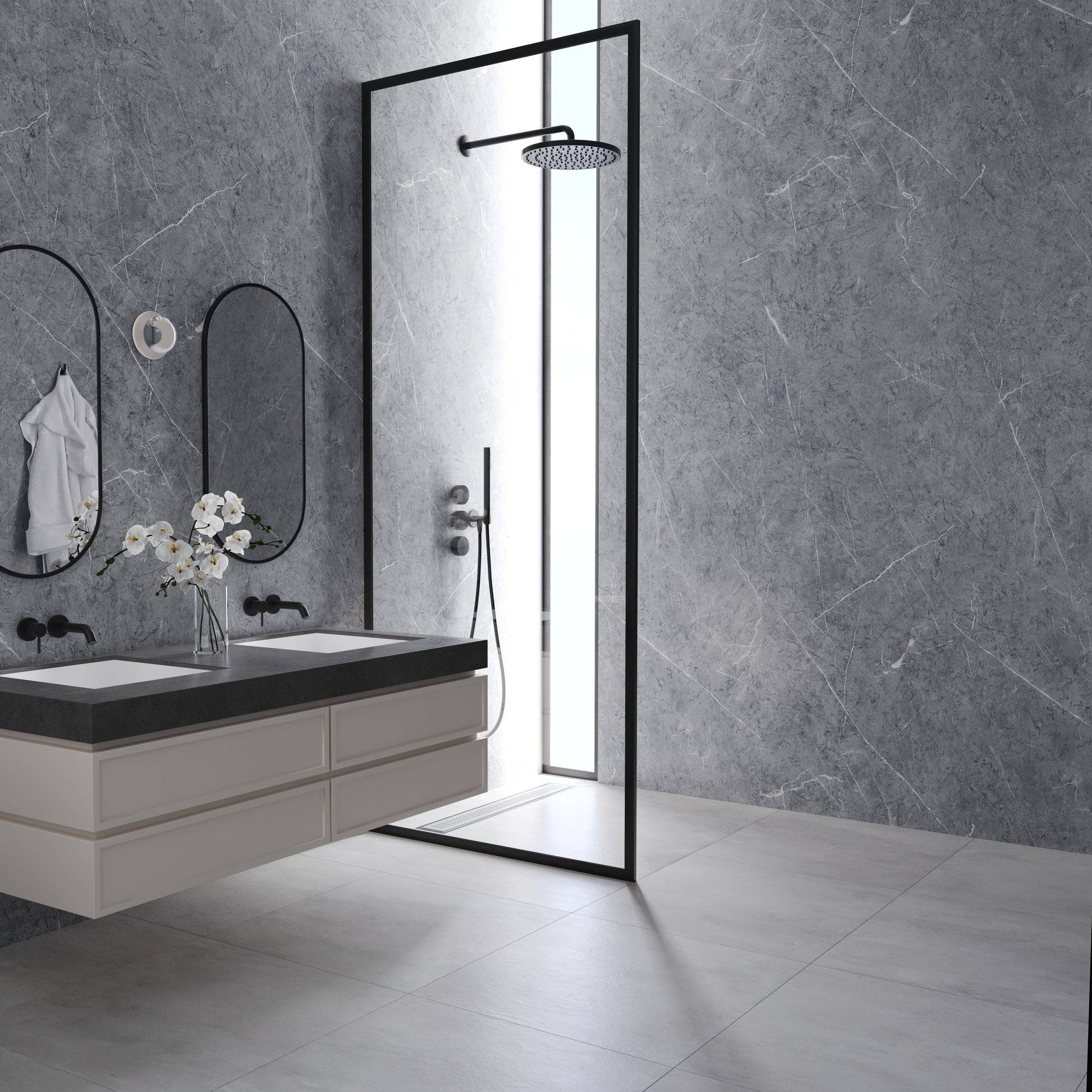

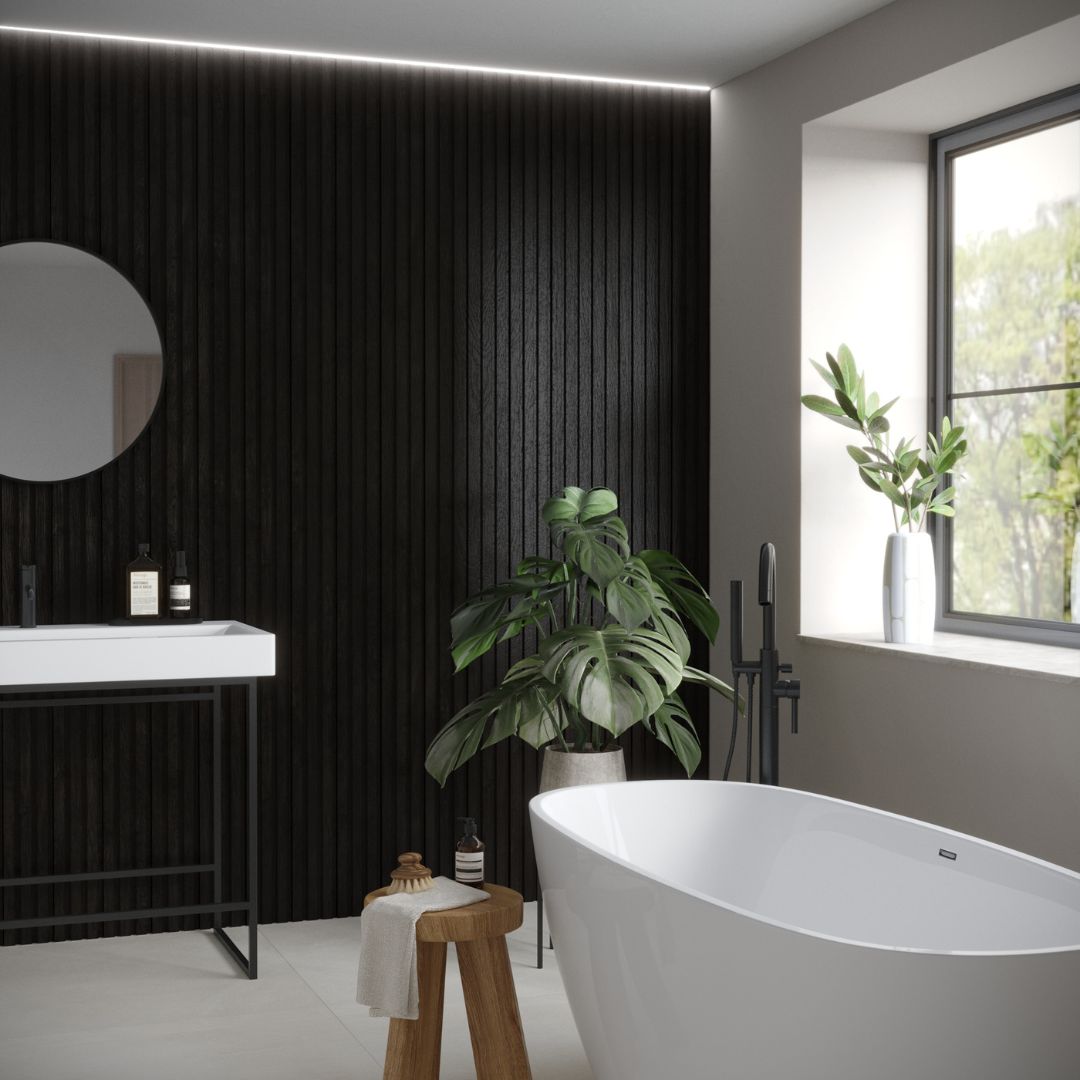

Hybrid acoustic wall panels are made from a composite material including wood or stone fibres along with thermoplastics. These panels are designed to sit at a mid-range option for your home or office space. Both acoustically and durably sound, hybrid panels make for a great fit when quality and budget are major factors.
Structure
Hybrid panels typically come with two layers:
- Printing Layer: A surface layer printed with a wood-like or stone-like effect. This allows for the appeal of timber or stone without the premium costs.
- Composite Layer: A mixed layer of wood or stone fibres with thermoplastics. Due to the structural integrity of this mixed material, hybrid wall panels are 100% waterproof.
Pros
- 100% Waterproof: Due to the WSPC layer, these panels are 100% moisture resistant, making them perfect for areas with moisture-prone environments such as bathrooms, kitchens and laundries. Additionally, with certain hybrid panels, 100% watertight surfaces between joints can also be achieved if installed following standards.
- Durability: Hybrid panels are typically quite resistant, both to fading and scratches.
- Design Versatility: With different printing solutions, hybrid panels can be placed in a variety of designs, ranging from traditional wood interiors to modern stone styles (e.g., marble, terrazzo).
- Cost Effectiveness: Given the artificial printing layer, hybrid panels are more affordable while still providing the realistic look of stone or wood finishes. Additionally, due to the composite layer, acoustic benefits can still be achieved.
Cons
- Colour Fading: Although the composite is durable, printed surfaces can fade when exposed to prolonged direct sunlight. Installing hybrids away from UV-intense areas or using UV-protective coatings helps maintain appearance.
- Acoustics: Similarly, while still being great for acoustics, when compared to timber slat panels that include a multiple layer design, they may not provide the same level of acoustic performance.
Foam Acoustic Wall Panels
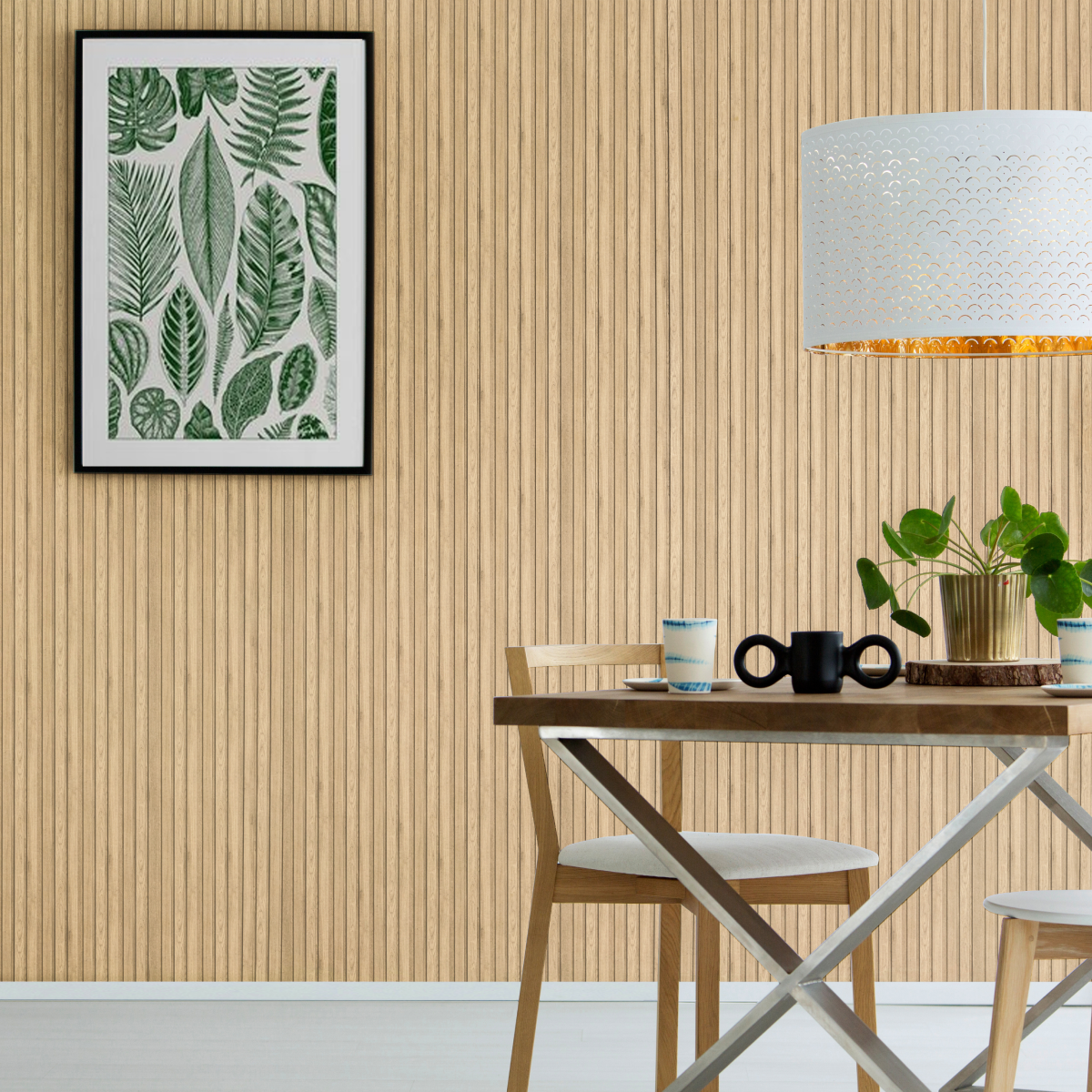

Foam acoustic wall panels are one of the most popular and cost-effective sound treatment options available. Made from lightweight, open-cell polyurethane or melamine foam, these panels are designed to absorb mid- to high-frequency sound waves, reducing echo and improving clarity. Their affordability and ease of installation make them ideal for home theatres, studios, offices, and classrooms.
Structure
Foam panels typically feature a single-layer open-cell structure engineered for maximum sound absorption:
- Acoustic Foam Core: The porous surface traps sound waves, converting them into small amounts of heat energy and preventing reflections within a room.
- Surface Design: Available in various patterns such as pyramids, wedges, or flat panels — each shape affects how sound is diffused and absorbed.
Pros
- Excellent Sound Absorption: Highly effective at controlling mid- and high-frequency sounds, improving speech and music clarity.
- Lightweight & Easy to Install: Can be mounted using adhesive strips or spray glue without specialised tools.
- Affordable: Foam panels offer one of the most budget-friendly acoustic solutions, perfect for DIY installations or rental properties.
- Customisable Appearance: Available in various colours, thicknesses, and surface patterns to suit different interior styles.
Cons
- Limited Low-Frequency Absorption: Foam panels are less effective at absorbing deep bass sounds, which may require bass traps or additional treatment.
- Durability: Softer material means panels can dent or tear more easily during handling or cleaning.
- Moisture Sensitivity: Foam can degrade or discolour when exposed to humidity or direct sunlight over time — best used in dry, indoor environments.
- Fire Resistance: Always check that foam panels meet Australian fire safety standards (AS 5637.1 or AS/NZS 1530.3) before installation in commercial spaces.
Cost Considerations
The overall cost of acoustic wall panels depends on several key factors:
Material Type:
| Foam or fabric panels |
Most affordable entry-level options.
|
| Hybrid panels |
Mid-range pricing with strong durability and moisture resistance.
|
| Timber slat panels |
Premium choice offering high-end design and superior acoustic performance.
|
Coverage & Installation:
Larger wall areas and professional installations increase costs but ensure optimal sound results and alignment.
Balancing Value:
Budget: Consider your budget, performance needs, and design preferences together.
For tailored advice, FloorVenue offers free on-site quotes to help select the most cost-effective solution for your space.
Maintenance & Care


Proper maintenance helps your acoustic wall panels stay beautiful and effective for years to come.
Regular Cleaning:
Fabric or foam panels: gently vacuum with a soft brush attachment to remove dust.
Timber slat panels: wipe with a dry or slightly damp cloth; avoid excessive moisture.
Hybrid panels: clean using a mild detergent and a soft cloth, ensuring surfaces are fully dried afterwards.
Environmental Protection:
Sunlight: Keep panels away from prolonged direct sunlight to prevent colour fading.
Moisture: Avoid exposure to humidity in non-waterproof materials like timber.
When installing acoustic wall panels in commercial, educational, or public buildings, it’s essential to verify that the products meet relevant fire rating standards. Request a Fire Rating Certificate from your supplier or installer to ensure compliance with Australian Building Codes and safety regulations.
For lasting results, consider applying UV-protective coatings or consulting FloorVenue’s specialists for maintenance-safe cleaning recommendations.
Conclusion
Acoustic wall panels are a simple yet powerful way to transform how a space sounds and feels. From the premium warmth of timber slat panels to the practical versatility of hybrid and foam options, there’s a solution for every design style and budget. These panels not only reduce echo and improve clarity but also elevate the look and comfort of your home or workplace.
Whether you’re designing a home theatre, upgrading your office, or creating a peaceful bedroom, investing in quality acoustic wall panels can make a noticeable difference in everyday living.
Contact FloorVenue today for a free consultation and expert advice on the best acoustic wall panels for your space.
